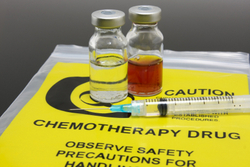Scientists, for the first time, have developed a new chemotherapy drug in the form of nanoparticles that is less toxic to a young woman’s fertility but extra tough on cancer.
This is the first cancer drug tested while in development for its effect on fertility using a novel in vitro test.
The scientists designed a quick new in vitro test that predicts the toxicity of a chemotherapy drug to fertility and can be easily used to test other cancer drugs in development as well as existing ones.
Currently the testing of cancer drugs for fertility toxicity is a time and resource intensive process.
“Our overall goal is to create smart drugs that kill the cancer but don’t cause sterility in young women,” said Teresa Woodruff, a co-principal investigator of the study and chief of fertility preservation at Northwestern University Feinberg School of Medicine.
Scientists hope their integration of drug development and reproductive toxicity testing is the beginning of a new era in which chemotherapy drugs are developed with an eye on their fertotoxity or fertility toxicity.
As cancer survival rates increase, the effect of cancer treatments on fertility is critically important to many young patients.
The scientists hope their integration of drug development and reproductive toxicity testing is the beginning of a new era in which chemotherapy drugs are developed with an eye on their fertotoxity.
As cancer survival rates increase, the effect of cancer treatments on fertility is critically important to many young patients.
The chemotherapy drug, arsenic trioxide, is packed into a very tiny Trojan horse called a nanobin. The nanobin consists of nano-size crystalline arsenic particles densely packed and encapsulated in a fat bubble. The fat bubble, a liposome, disguises the deadly cargo – half a million drug molecules.
You have to wallop the tumour with a significant dose of arsenic but at the same time prevent exposure to normal tissue from the drug,” said O’Halloran in a statement.
The fat bubble is hundreds of times smaller than the average human cell. It is the perfect size to stealthily slip through holes in the leaky blood vessels that rapidly grow to feed tumours.
The local environment of the tumour is often slightly acid, it is this acid that causes the nanobin to release its drug cargo and deliver a highly effective dose of arsenic where it is needed.
“The drug was designed to maximise its effectiveness but reduce fertotoxicity,” said O’Halloran.
The study was published in the journal PLOS ONE.

